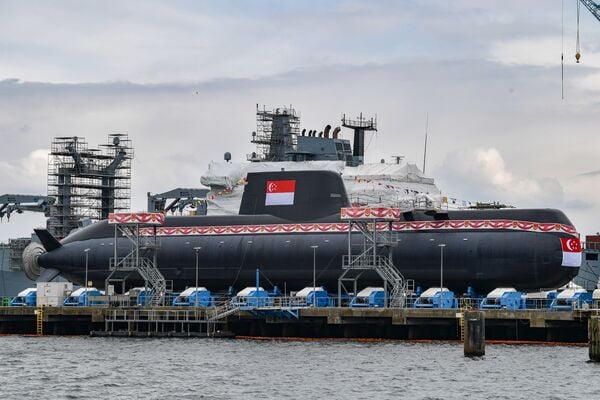
Singapore's fourth Type 218SG submarine, seen here before its launch ceremony on 22 April 2024. (Singapore Ministry of Defence)
German shipbuilder ThyssenKrupp Marine Systems (TKMS) has launched the last of four Invincible-class (Type 218SG) air-independent propulsion (AIP)-equipped diesel-electric submarines (SSKs) on order for the Republic of Singapore Navy (RSN).
The vessel, which will be known in service as RSS Inimitable once commissioned, was launched on 22 April at TKMS' facilities in Kiel, Germany, the Singapore Ministry of Defence (MINDEF) announced in a statement on the same day.
“Conceptualised and engineered jointly by the RSN, Defence Science and Technology Agency (DSTA), and industry partner TKMS, the Invincible-class submarines are customised for operations in Singapore's shallow and busy tropical waters, and they possess longer endurance and higher payloads,” read the statement.
“Following the launch, Inimitable will undergo a series of sea trials before delivery to Singapore,” the ministry added, further disclosing that the second-of-class SSK that was launched in 2022, Impeccable , is still undergoing a series of local sea trials with plans to fully operationalise and commission it in 2024.
Singapore first announced that it has signed a contract for the first two submarines of the class with TKMS in December 2013 and subsequently disclosed an order for two more vessels in May 2017. The contracts include a logistics and training package for RSN crew to train in Germany.
The first-of-class, Invincible , was launched in February 2019. The second- and third-of-class, which have been named Impeccable and Illustrious respectively, were both launched in December 2022. Impeccable arrived in Singapore in July 2023 but its sister vessels are still in Germany for training and familiarisation operations.
Looking to read the full article?
Gain unlimited access to Janes news and more...
